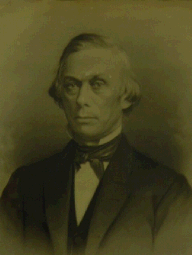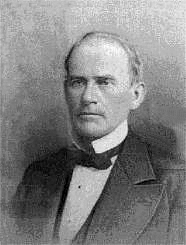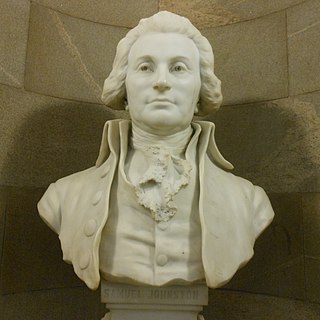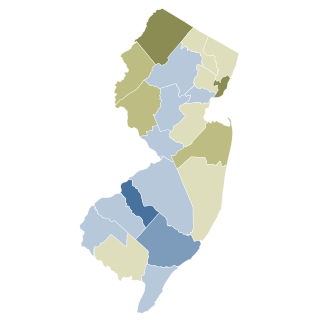A constitutional amendment is a modification of the constitution of a polity, organization or other type of entity. Amendments are often interwoven into the relevant sections of an existing constitution, directly altering the text. Conversely, they can be appended to the constitution as supplemental additions, thus changing the frame of government without altering the existing text of the document.

The Delaware General Assembly is the legislature of the U.S. state of Delaware. It is a bicameral legislature composed of the Delaware Senate with 21 senators and the Delaware House of Representatives with 41 representatives. It meets at Legislative Hall in Dover, Delaware, convening on the second Tuesday of January of odd-numbered years, with a second session of the same Assembly convening likewise in even-numbered years. Normally the sessions are required to adjourn by the last day of June of the same calendar year. However the Governor can call a special session of the legislature at any time.
The Constitution of the State of Tennessee defines the form, structure, activities, character, and fundamental rules of the U.S. State of Tennessee.

The Constitution of the State of Connecticut is the basic governing document of the U.S. state of Connecticut. It was approved by referendum on December 14, 1965, and proclaimed by the governor as adopted on December 30. It comprises 14 articles and has been amended 31 times.
The Constitution of Arkansas is the primary organizing law for the U.S. state of Arkansas delineating the duties, powers, structures, and functions of the state government. Arkansas' original constitution was adopted at a constitutional convention held at Little Rock in advance of the territory's admission to the Union in 1836. The current constitution was ratified in 1874 following the Brooks–Baxter War.

John Hunn was an American businessman and politician from Camden, Kent County, Delaware. The first governor elected after a reform of Delaware's state constitution and a compromise candidate, Hunn served from 1901 until 1905 and became the first of a multi-decade string of elected Republican Delaware governors.
The Delaware Constitution of 1776 was the first governing document for Delaware state government and was in effect from its adoption in September 1776 until its replacement by the 1792 constitution.

Dr. Joshua Clayton was an American physician and politician from Mt. Pleasant in Pencader Hundred, New Castle County, Delaware. He was an officer of the Continental Army in the American Revolution, and a member of the Federalist Party, who served in the Delaware General Assembly, as Governor of Delaware and as U.S. Senator from Delaware.

William Cannon was an American merchant and politician from Bridgeville, in Sussex County, Delaware. He was a member of the Democratic Party and later the Republican Party, who served in the Delaware General Assembly and as Governor of Delaware during much of the Civil War.

Gove Saulsbury was an American physician and politician from Dover, in Kent County, Delaware. He was a member of the Democratic Party, and he served in the Delaware General Assembly and as Governor of Delaware. He led opposition to civil rights for African Americans in Delaware.

William Tharp Watson was an American banker and politician from Milford, in Kent County, Delaware. He was a member of the Democratic Party, who served in the Delaware General Assembly and as Governor of Delaware.
Henry Molleston III was an American physician and politician from Dover, in Kent County, Delaware. He was a member of the Federalist Party, who served in the Delaware General Assembly, and was elected Governor of Delaware, but died before taking office.
The Constitution of the State of New York establishes the structure of the government of the State of New York, and enumerates the basic rights of the citizens of New York. Like most state constitutions in the United States, New York's constitution's provisions tend to be more detailed and amended more often than its federal counterpart. Because the history of the state constitution differs from the federal constitution, the New York Court of Appeals has seen fit to interpret analogous provisions differently from United States Supreme Court's interpretation of federal provisions.

The Government of Delaware encompasses the administrative structure of the US state of Delaware as established by its 1897 constitution. Analogously to the US federal government, it is composed of three branches: executive, legislative, and judicial. The Governor is head of the executive, the General Assembly is the legislature, and the Supreme Court is the highest court. The state is also organized into counties, municipalities, school districts, and special districts.

The Fayetteville Convention was a meeting by 271 delegates from North Carolina to ratify the US Constitution. Governor Samuel Johnston presided over the convention, which met in Fayetteville, North Carolina, from November 16 to 23, 1789 to debate on and decide on the ratification of the Constitution, which had recommended to the states by the Philadelphia Convention during the summer of 1787. The delegates ratified the Constitution by a vote of 194 to 77, thus making North Carolina the 12th state to ratify the constitution.

On November 4, 2014, Illinois voters approved the Illinois Right to Vote Amendment, a legislatively referred constitutional amendment to the Constitution of Illinois. The amendment was designed to provide that no person shall be denied the right to register to vote or cast a ballot in an election based on race, color, ethnicity, language, national origin, religion, sex, sexual orientation or income.

On November 2, 2010, Illinois voters approved the Illinois Governor Recall Amendment, a legislatively referred constitutional amendment to the Constitution of Illinois. The amendment changed the state constitution to allow recall elections of Illinois governors.

An unsuccessful attempt was made to pass an amendment to the Constitution of New Jersey in 1926 and 1927. The intent of the amendment was to have members of the New Jersey General Assembly serve two-year terms instead of one and also lengthen the terms of state senators and the governor from three years to four. The proposed amendment was passed twice by the legislature, and the text was approved by the attorney general. Before the proposal could be put before the voters for final approval, it was noticed that although the legislature had intended that Assembly members be elected biennially, the proposed amendment provided that they were to be chosen "biannually", meaning they were to be elected twice a year. After this discovery, the legislature passed a resolution defining "biannually" to mean "biennially", and proceeded with the referendum. On September 20, 1927, the people of New Jersey voted down the proposal, and Assembly members were elected annually until New Jersey instituted a new constitution in 1947.









